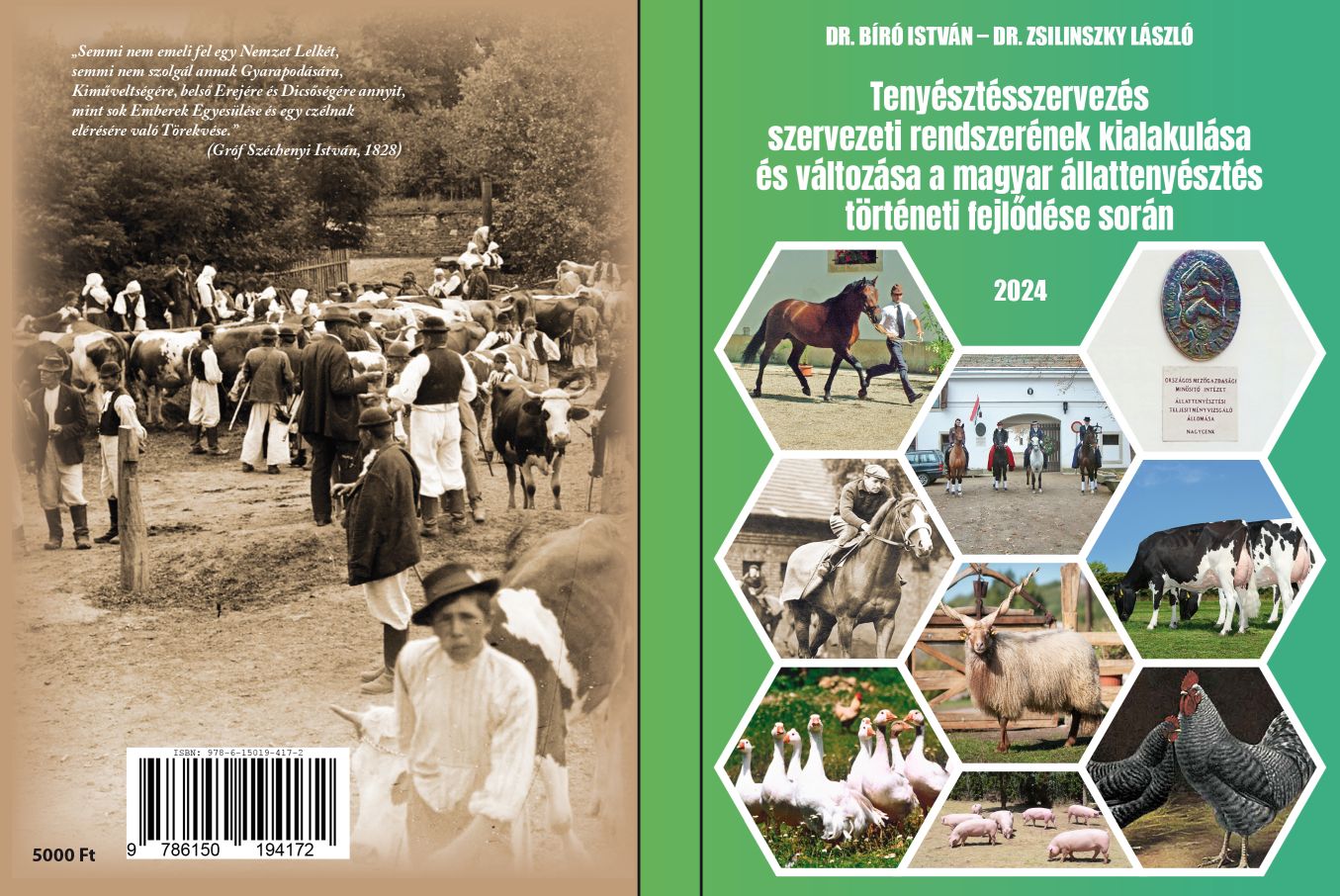Book review
- Részletek
- Készült: 2024. április 29. hétfő, 18:35
A new professional issue was published (in Hungarian) at the end of March 2024, Dr. István Bíró - Dr. László Zsilinszky: Formation and change of the structural system of breeding organization during the historical development of Hungarian livestock breeding. It has now fortunately been published with the support of the Ministry of Agriculture and the care of the DAGENE Association. The publication may be of greater interest among agricultural education and research institutions, breeding organizations, and animal husbandry specialists.
It has been preserved in the works of writers, following the development history of our animal husbandry, that the main occupation of our conquering ancestors was animal husbandry. Upon their arrival in their new homeland, the Hungarian tribes possessed considerable livestock wealth. The natural characteristics of the Carpathian Basin provided ideal conditions for animal husbandry. Thus, this important sector remained a determining factor of economic life for centuries. The history and process of Hungarian livestock breeding spans a long period of time. Its development was strongly influenced by growing professional experience and organization.
Conscious animal husbandry is an extremely diverse and complex, but at the same time well-co-ordinated set of breeding activities. The genetic development work that foresees a quality animal product takes effect in the process of breeding organization of animal husbandry.
In the historical process of Hungarian livestock breeding, this book tries to trace the eras and development path of the documented breeding organization. It tries to show how long and arduous the professional path has been from the beginning during the conquest, through the development of conscious breeding, to modern selection systems, such as the domestic application of modern genome tests, to the present day. The self-sacrificing contribution and work of many excellent domestic professionals became the determinant of the success of each era. (See the personalities highlighted in the book!)
The centuries-old history and experiences of domestic livestock breeding clearly demonstrate that the eras that bring documentable development at the national level (in breeding programs, genetic progress, etc.) when the state, government bodies, and later the EU institutional systems with their specific (regulatory, financial, etc.) tools help and motivate the organization of breeding, the work of breeders and social organizations responsible for breeding. Excessive influence of the state, as it happened e.g. in the 1950s and 1960s, resulted in a decline in the same way as when government agencies left it alone, inadequately supporting the social actors of breeding (see the end of the 2000s!).
It is necessary to maintain and modernize the standard of domestic breeding, because even in the global market, the „market competition” has already intensified tremendously, both for domestic and foreign distribution of breeding animals, reproductive materials, etc., and in relation to the production of quality animal products. This is a big challenge for domestic breeding organizations designated and responsible for the genetic maintenance of breeds. Their market exposure and the compulsion to use the most advanced breeding tools was reinforced by „Regulation (EU) 2016/1012 of the European Parliament and Council”. It enabled intra-EU „transition” within the breed, i.e. any breed association under given „breeding authority” conditions, can enter as a competitor against the original, legally operating breeding organization of another EU member state.
At the same time, the EU legislative and institutional framework also provides the current framework and practical possibilities for the domestic breeding organisation (breeding programs, population genetics developments, etc.). Other professional civil organizations can collaborate creatively and „freely” and be part of international animal breeding programs. In the context of the above, the regulated breeding policy and the institutional system of the well-structured breeding organization can be connected to each other in the long term or even in the present, in order to successfully develop the domestic animal production and implement the necessary selection programs, in the case of all affected economic animal species.
It can also be stated that in todays’ „accelerated” world, the need in the Hungarian breeding organization for necessary use of results of international scientific development, such as genomics, artificial intelligence, etc., emphasizes even more the close co-operation of domestic breeding organizations that help each other. Furthermore, these stimulate the co-operation of domestic breeding organizations with the breeding authority, the agricultural administration and other bodies. The supportive government conditions, such as adequate budgetary support for the domestic breeding organization, the creation of tender opportunities for large investments (e.g. IT and special laboratory developments), etc., require continuous reinforcement. Preservation of the high standard of livestock breeding in Hungary is in the interest of the whole economy and stems from the traditions of our history in the Carpathian Basin!






